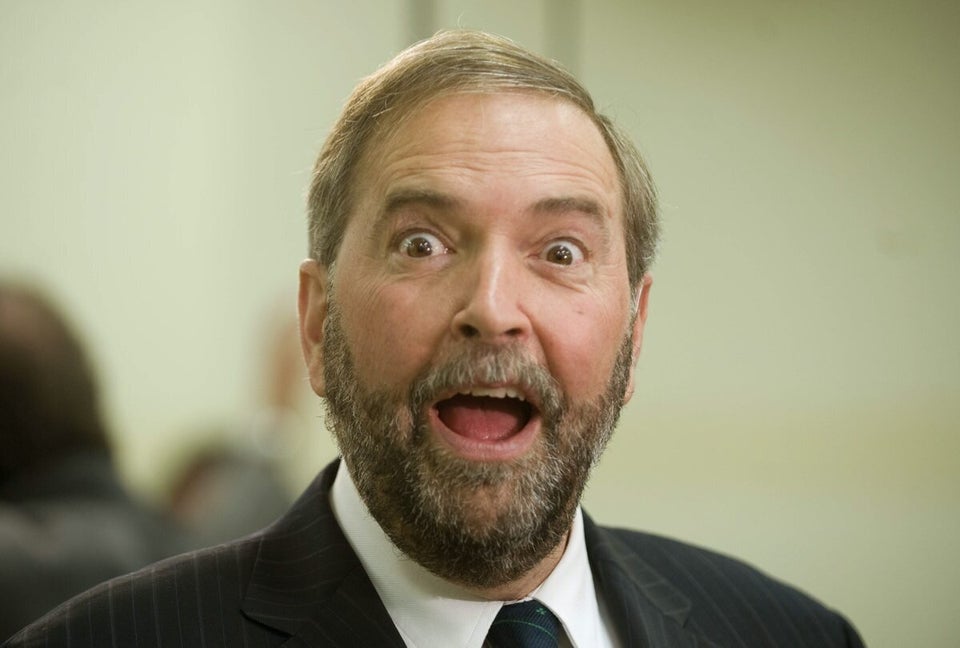
A new poll suggests Liberals hold a comfortable lead over the governing Conservatives nationwide, as well as in battleground Ontario.
But British Columbia remains a close race — and one of the strongest regions for Thomas Mulcair's New Democrats.
The survey, conducted between Nov. 14-25 by Harris-Decima for The Canadian Press and interviewing 2,034 Canadians via landline and mobile telephone, put Liberals at 36 per cent in national support. They were followed by the Tories at 26 per cent and New Democrats at 23 per cent.
Aside from an uptick in Liberal support of four points from Harris-Decima's last published poll taken at the end of October, these numbers are generally similar to where they have been since the summer.
Liberals put up good numbers in Quebec, with 37 per cent to 26 per cent for the Bloc Québécois and 22 per cent for New Democrats, and were also in front in Atlantic Canada (40 per cent to the NDP's 32 per cent) and the Prairies (37 per cent to the Tories' 32 per cent). That latter result explains, in part, the strong performance of the party in last week's two Manitoba by-elections.
The Conservatives led in Alberta by a wide margin.
But elections in Canada are primarily decided in Ontario, and there the Liberals have opened up a wide lead. This poll gave them 39 per cent support in the province, up nine points on the Tories. The NDP was well behind in third with 20 per cent.
Harris-Decima's tracking chart shows that these levels of support, with numbers wobbling back and forth within the margin of error, have been holding roughly steady since Justin Trudeau became Liberal leader in April. Since then, the Tories have not managed a 35 per cent result in Ontario in any polling by Harris-Decima, while Liberals have been over 40 per cent on several occasions.
Those are important numbers for the Liberals, as Jean Chrétien built his large majorities in the 1993 and 2000 elections here. For the Conservatives, any shot of another majority runs through Ontario. There is no hope for anything but a minority government unless the tide can be dramatically turned in the province. After all, Stephen Harper's party won Ontario by almost 20 points in 2011.
British Columbia has fewer seats at stake, and it is less likely to choose which party gets to form the next government. But with the province boosted to 42 seats in the expanded electoral map, and each party holding good odds of claiming a third of them or more, it is an important battleground as well.
The poll suggests that no party has a distinct advantage. New Democrats just edged out the Liberals with 32 to 31 per cent support in the province, with Conservatives in third at 24 per cent.
But the tracking chart highlights wild fluctuations in B.C., due in large part to the smaller sample sizes. Those fluctuations show a province that is a close three-way race. Though Liberals have tended to poll the best of the three parties on the west coast since the spring, the NDP and Tories have each led at some point during that time as well.
On the face of it, one would assume a Liberal/NDP contest in Vancouver and an NDP/Conservative race in the rest of the province. But the impressive numbers put up by the Liberals in two rural Manitoba ridings last week imply that conventional wisdom may not be so wise on where support is likely to come for the party.
Éric Grenier taps The Pulse of federal and regional politics for Huffington Post Canada readers every week. Grenier is the author of ThreeHundredEight.com, covering Canadian politics, polls and electoral projections.
Also on HuffPost
